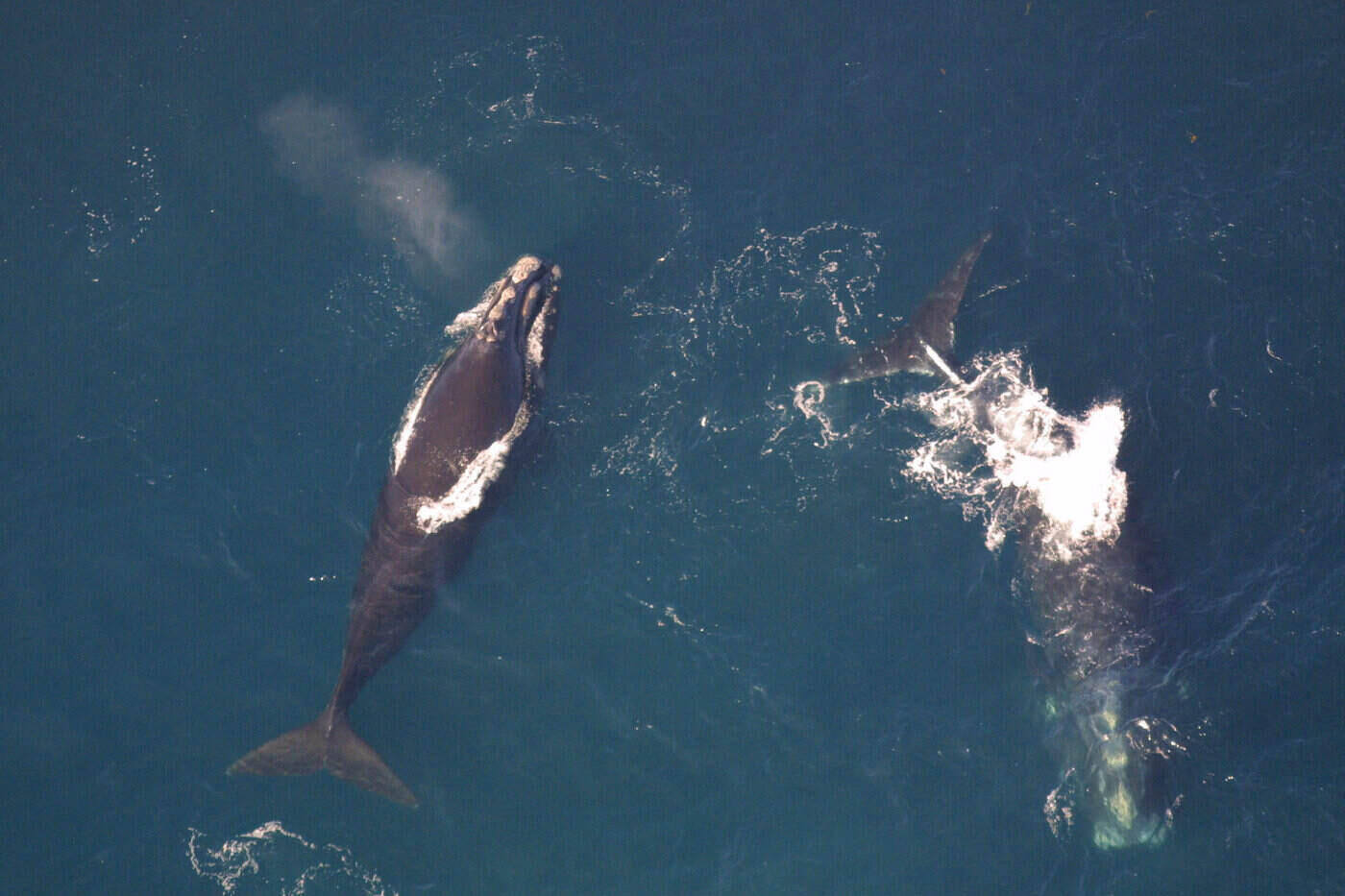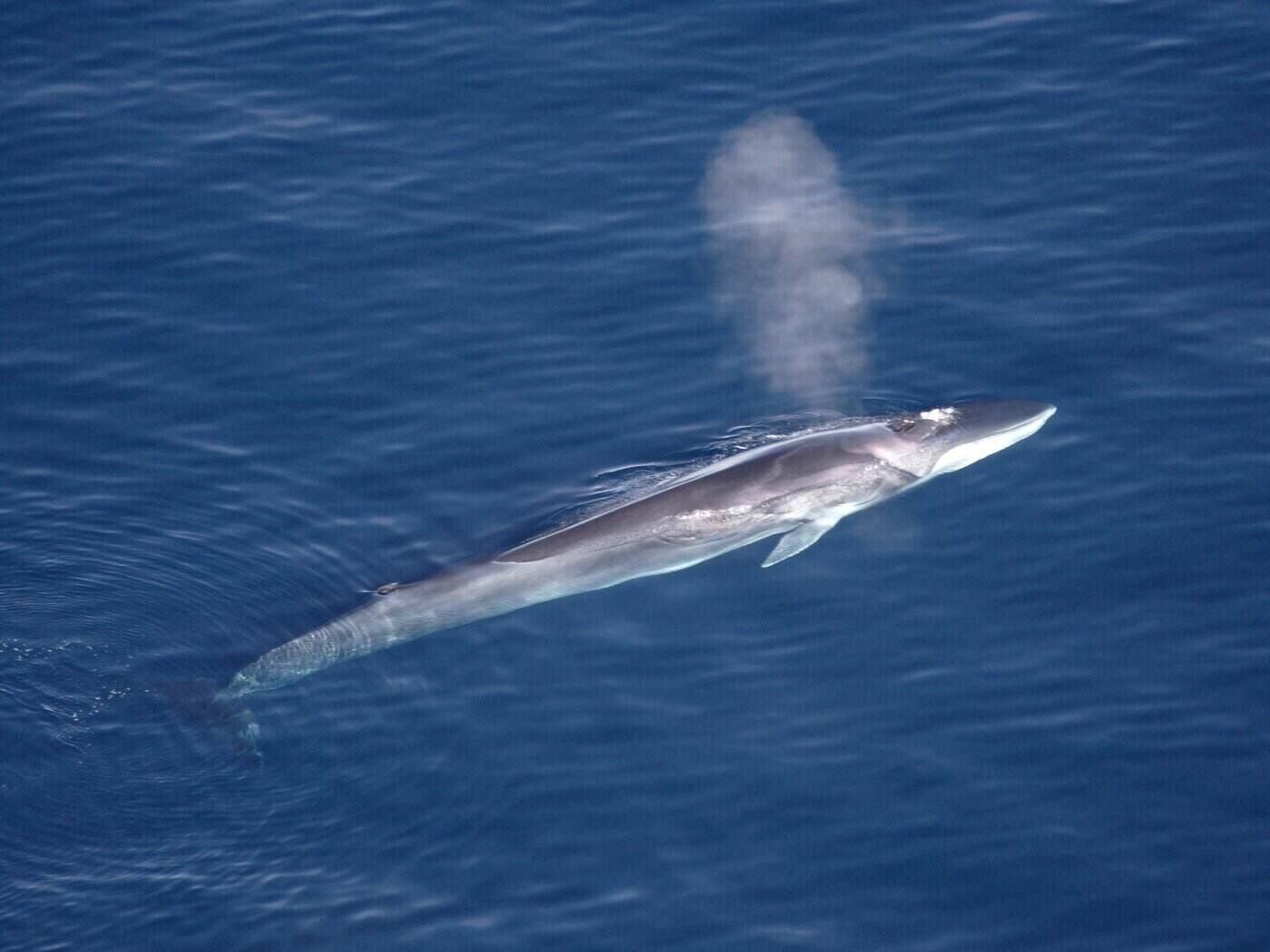Whales are some of the most critically endangered animals on the planet. Commercial fishing, habitat destruction, pollution, climate change and lethal collisions with ship traffic have all decimated the world’s whale populations.
Many of us will never see a whale in real life, and that can make it harder to become invested in their survival and their futures. So let’s get to know these incredible creatures better so we have even more reasons to protect them.
5. Sperm Whale (Physeter macrocephalus)
Sperm whales can grow over 50 feet in length and weigh up to 90,000 pounds, or 45 tons. In addition to being one of the largest animals on Earth, sperm whales also have the largest brains on the planet. Their heads take up about a third of their body length.
Unlike the other whales on this list, sperm whales have teeth instead of baleen. These teeth can be almost 8 inches long and weigh over 2 pounds a piece.
Whale and Dolphin Conservation (WDC) tells us that aside from their intimidating teeth, sperm whales have impressive diving powers to help them hunt for their food. They can “dive to depths of up to 3km and hold their breath for an incredible 2 hours.” Sperm whales echolocate when they hunt, searching for octopus, fish and sharks. Their favourite food, however, says WDC, is the giant squid.
These whales are found in all the major oceans. They rarely come into coastal waters, though, and spend their time on the open seas. This makes it difficult for scientists to learn about their movements and migration patterns. We do know that they form close-knit social groups, much like humans and elephants.
Sperm whales are an endangered species, like all the whales on this list. The National Wildlife Federation suggests they number around 300,000. They were killed extensively by commercial whalers in the 19th and 20th centuries, most famously in Herman Melville’s novel, Moby Dick.
4. Bowhead Whale (Balaena mysticetus)
The bowhead whale is enormous, reaching 60 feet long and weighing upwards of 120,000 pounds, or 60 tons. They’re specially adapted for cold water living, and sport an insulating layer of blubber 1.5 feet thick, according to Lori Quakenbush of the Alaska Department of Fish and Game.
They use their extremely large heads for breaking through ice so they can breathe. Indigenous hunters report seeing bowhead whales break through ice up to 2 feet thick with their giant heads.
Although they swim very slowly, they cover a lot of distance in their yearly travels. They winter in subarctic regions in the Atlantic and Pacific but move north into the Arctic over the summer to feed.
Bowheads might be some of the longest living animals on Earth, possibly living to 150 or 200 years. “Ivory and stone harpoon heads last used in the late 1800s have been recovered from five bowheads harvested in the last 25 years,” says Quakenbush.
The World Wildlife Fund (WWF) estimates that there are about 10,000 of these whales left.
3. Right Whale (Eubalaena)
The right whale is a truly hefty creature. The largest species—the North Pacific right whale—weighs up to 220,000 pounds, or 110 tons. They can grow over 50 feet long.
Right whales have distinctive rough white patches like giant warts on their heads and bodies. These patches, called callosities, are unique, and help researchers who study them identify individual animals. One gross fact about right whales is that those patches are white because they’re covered in whale lice. So there’s that.
These whales like coastal waters. They’re often found in groups, and like to breach and play on the surface, which historically made them easier targets for hunters. They’re still regularly killed when they become entangled in commercial fishing gear or struck by ship traffic.
All 3 species of right whale are endangered. The (WWF) estimates that there are only 366 North Atlantic right whales left. The Marine Mammal Commission states that there are no more than 500 North Pacific right whales. Commercial hunting all but wiped them out by the turn of the 20th century, and presently, right whale deaths outpace births.
Since there are so few of them, scientists know very little about their movements. We do know they spend their summers feeding in cooler waters and head for more temperate climates in the winter where they breed and give birth.
2. Fin Whale (Balaenoptera physalus)
Fin whales, or finback whales, can grow up to 90 feet long and reach up to 80 tons, or 160,000 pounds. They’re recognizable by the neat colour patterns on their lower jaws—white on the right side and dark on the left—a pattern that’s reversed on their tongues.
Fin whales thrive in the open ocean, rarely coming close to coasts and rarely breaching. They’re also the fastest whales, clocking up to 23 miles per hour. Their habits and their speed make them harder for scientists to study, so we don’t know as much about them as you might expect.
We do know that they’re found in every ocean, and that they move from polar feeding areas in the summer to warmer, but not tropical, regions in the winter. Oceana states that the lifespan of the fin whale is estimated to be 150 years.
The WWF estimates that their population is somewhere between 50,000 and 90,000. Oceana notes that Iceland “reestablished a commercial hunt of fin whales” in 2006, putting them at risk again. In the past few years, Icelandic whaling companies have paused their activities, and it remains to be seen whether, in post-pandemic times, they’ll resume business again.
1. Blue Whale (Balaenoptera musculus)
This isn’t just the largest whale species—this is the largest animal that has ever lived on Earth. They can reach over a hundred feet in length and weigh up to 400,000 pounds, or 200 tons.
To put it in proportion, The Noyo Center tells us that a blue whale’s heart is “the size of a Volkswagen” and the main aorta of that heart is big enough that “a young child” could crawl through it. If this makes you assume that a blue whale could swallow that child whole, however, you’d be mistaken. Strangely, their throats only reach 4-8 inches in diameter.
Their gigantic size gives them another record-holding power, too. “It is the loudest animal on Earth,” explains the World Wildlife Fund, “even louder than a jet engine—its calls reach 188 decibels while a jet reaches 140 decibels.” Those calls travel hundreds of miles and help blue whales to communicate with each other over vast distances.
Blue whales can be found in oceans around the world. Most migrate to polar climates to feed in the summer and make incredibly long journeys back to warmer waters for their winter breeding and calving season. Little is known about the blue whale’s life cycle, but it’s estimated that they live 80-90 years.
The WWF states that in 2018 there were about 3,000 blue whales left in the world.
What You Can Do
Since humans have done so much damage to these extraordinary animals, it’s up to humans to try to restore their populations. If you want to be a part of that work, consider supporting organizations who are actively protecting whales around the world.
The World Wildlife Fund, Sea Shepherd Conservation Society, the American Cetacean Society and the Oceanic Preservation Society are just a few of the amazing groups trying to protect whales and their habitats.
If financial support isn’t possible for you, consider signal boosting the work of activist organizations on social media. Also keep an ear to the ground for opportunities to get the word out about upcoming legislation and policies that will affect whales. They need the help.
Written by Anne Elliot
Feature image: Cameron Venti; Image 1: Gregory Smith; Image 2: UW News; Image 3: Lauren Packard; Image 4: Aqqa Rosing-Asvid; Image 5: Channel Islands National Marine Sanctuary






